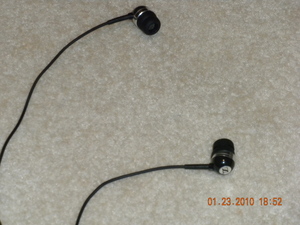Discus Fish in the home acquarium are challenging but rewarding
Discus fish are considered one of the most beautiful of fresh water tropical fishes and one of the most challenging to maintain in aquariums. Discus belong to the genus Symphysodon. There are three species: red discus �⒬” Symphysodon discus, blue discus – Symphysodon aequifasciatus and a relatively new species called Symphysodon tarzoo. Discus are flat and round in shape as the name Discus implies. The dorsal and anal fins accentuate the rounded shape.
Discus come in a variety of colors and patterns: aqua, blue, green, red and chocolate brown. The pattern is usually a striation, or stripes, of a contrasting color. Discus have three layers of colors, a base color, often cream to reddish brown, a secondary color, blue or green and a black pigment which makes up the striation. Sold color Discus, such as royal blue are Discuss where the black pigment has been nearly bred out.
The colors can be influenced by a number of environmental factors, including: diet, temperature, food, trauma and stress. The fish itself can deepen the color at will, and does so during breeding and raising their young. The iris of the eye is usually deep red. They will grow to six to eight inches. It is difficult to tell the male and females apart if it isn’t breeding season. And even then it remains a challenge.
Naturally found in still pools of the Amazon River Discus fish gather in groups of 6 to 8. They prefer shady areas and will hide under rocks and wood if frightened. In a tank, floating plants should be provided to mimic the shade of the Amazon. The water must be kept very clean. The fish are timid with a calm disposition. Since in the wild they share the water with other fish they can be kept in a community tank with other peaceful varieties of fish. A word of caution, if the Discus hasn’t been brought up in a tank with small fish the Discus may try to eat them. Their diet normally consists of vegetable matter, insects, and small fish. In a tank it’s important to feed them a wide variety of nutritious food, including fortified flakes and brine shrimp.
Discuss are caught in the wild at night by blinding them with a bright light, the ‘deer in the headlights’ effect. The area is then encircled with netting and the net drawn in capturing the fish. Raising Discus is a major industry in a Thailand, Singapore and Malaysia.
Breeding Discus
If just maintaining healthy Discus in an aquarium is a challenge successfully breeding them and keeping the fry alive is even more so. Discus are fussy about their mating partners so just throwing any two opposite gender fish in a tank won’t do it. They are selective.
Out of a group of eight Discus perhaps only two will pair up. A signal that the pair is ready to spawn is when you see them nipping the glass of the aquarium. Remove the pair to a breeding tank. A nearly vertical surface like a vertical tube or rock should be in the tank. The female will lay from 100 to 200 eggs on the vertical surface and the male will follow her fertilizing the eggs. Both the male and the female will guard the eggs not allowing other fish to come near. After 2-3 days the fry will hatch. Occasionally you will one or both of the parents nibbling at the eggs in an attempt to help the fry hatch.
The parents will move the fry to another area of the tank by mouthing them. They will attach the fry to this new area by sticky filaments. Baby Discus are not good swimmers. The fry feed on a mucous secreted by the parents skin, not exactly mother’s milk but it seems to work for the Discus. In 4 or 5 days the fry will be attached to the parents by the filaments and continue to feed off the secretion. In about 10 days the fry should be removed to their own tank and fed commercial food.
Discus can be fostered but it’s an involved process. After the eggs have been fertilized by the male, the surface and the eggs of course should be removed to a one gallon jar that is placed in a five gallon tank that has been filled with water from the breeding tank. The jar and the small tank should be exactly the same temperature as the breeding tank. The small tank should have filter and heater and maintain a temperature of 88 degrees F. The jar should have an air stone placed in it to maintain a current.
The eggs should hatch in 2 to 3 days and the babies start free swimming in 3 to 4 days. Now comes the challenge. The water must be changed and the fish fed every 4 to 6 hours. The water in the tank is used to change the water in the jar. The temperature of both the tank and the jar will be exactly the same. Clean water changes of 90% and the water at the same temperature is critical to the success of raising the fry.




